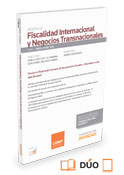
Did you know that Pillar One and Pillar Two continue to have much ink spilled in the international tax community? The OECD released papers on both topics last month. I was hoping that this last quarter of 2023 would bring more exciting topics or even would shed more light on more important themes. Maybe was it just my illusion? I would say we still have time till 2023 ends…
On 11 October 2023, the OECD released the text of the new Multilateral Convention to Implement Amount A of Pillar One (MLC). This is a key component for co-ordinating a reallocation of taxing rights to market jurisdictions with respect to a share of the profits of the largest and most profitable multinationals enterprises (MNEs) operating in their markets. Additionally, it aims to improve tax certainty and it removes digital service taxes (DST). This is, again, part of the ongoing work of the OECD/G20 Inclusive Framework on BEPS to address the tax challenges arising from the digitalisation of the economy.
The MLC was released along with a few additional papers, an Explanatory Statement[i], Understanding on the Application of Certainty for Amont A of Pillar One[ii], as well as the Overview document[iii] and a document about the Update to the economic impact assessment of Pillar One[iv].
A few days ago, a webinar was presented by the OECD team who drafted the MLC. It was interesting to hear their views. I think the provisions were somehow confusing that it felt necessary for them to clarify the provisions, in a form of diagram describing them step-by-step (when you need to draw a figure this means that words are not clear enough!) As a matter of fact, Sandra Knaepen, Acting Head, tax administration and VAT division of OECD, started the presentation by recognizing that the team realized that some rules are new and needed to be explained in more details “there is a significant amount of rules that we released and that they are very novel and so we plant to go a little bit more into technical details about the design and the practical application of these provisions.”

Applying Amount A rules:
Set of rules presented in 5 steps should be followed by MNEs in order to comply with Amount A.
Step 1 – Scope Determination
The first step is to determine if the MNE is within the scope, by conducting a series of revenues and profitability tests based on some components. The Amount A rules broadly apply to groups which have revenue in the period of greater than EUR 20 billion (revenue test) and an adjusted pre-tax profit margin of greater than 10% (profitability test). However, where a group fails the profitability test, but one of its reported disclosed segments meets the above two thresholds on a standalone basis, this segment is brought into scope and each subsequent step will apply to the segment in isolation. Limited exclusions apply to specific industries such as financial services and autonomous domestic business.
Step 2 – Eligible markets
To allocate the revenue of MNEs to specific market jurisdictions, there are sourcing rules to be applied in order to determine the exact jurisdiction, based on the end consumer’s location. The revenue must be categorized by type of groups, using reliable methods based on reliable indicators which consist of information available to the MNE that satisfies a reliability standard and allocation key measures. A market country would be entitled to an allocation of Amount A if the group’s annual revenues arising in the country is a) equal or greater than EUR 1 million or b) equal or greater than EUR 250,000, in case of countries with a GDP of less than EUR 40 billion.
Step 3 – Calculation and Allocation of Profit
Amount A tax base is determined using the group profit reported in consolidated financial accounts, applying book-to-tax adjustments, and considering any prior losses sustained by the MNE. After getting to the group profit three-step formula is used to determine 25% of the MNE’s profit in excess of 10% of its revenue. To prevent double counting, the Marketing and Distribution Safe Harbour Adjustment (MDSH) mechanism is used to allocate profit.
Step 4 – Elimination of double taxation
The MNE first determines its relevant profit in each jurisdiction by summing the accounting profit (or loss) of each entity in said jurisdiction and making book-to-tax adjustments. It, then, determines its return on depreciation and payroll in each country, on a similar basis, and expresses the jurisdictional profit, as a return on depreciation and payroll (RODP) to identify which countries are required to eliminate double taxation. Then, a tier process is followed based on RODP jurisdiction, to allocate the obligation to relieve double taxation at the jurisdictional level, arising in respect of any Amount A liability would be allocated among countries that earn residual profits. Said obligations are allocated first to the jurisdictions with the highest RODP. Furthermore, withholding taxes reduce the residual profits and therefore potentially the obligation of a jurisdiction to relieve double taxation. Finally, specific rules must be applied to identify within each relieving jurisdiction the entities of the MNE that are entitled to claim relief from double taxation.
Step 5 – Filing obligation, payment and claiming relief
The Designated Payment Entity (DPE) submits one single filing of a standard template, with the leading tax administration. This would satisfy all Amount A tax filing obligations of the MNE group to all market jurisdictions. It would, also, be presented to relieving jurisdictions for double tax relief process, within 90 days of the submission of a claim. The standard template for filing Amount A tax return includes documentation on financial and tax data, amount of income eligible for tax relief from double taxation, for each group entity and, any request for a comprehensive certainty review. To be noted that the deadline for filing will be between 9 and 12 months from the end of the period, as determined by the filing country. The payment of tax would be due 18 months after the end of the period. Relief entities are required to make compensating payments to the designated payment entity, which are disregarded for all tax purposes.
Tax Certainty Framework for Amount A and related issues
The Amount A tax certainty framework consists of the following three mechanisms to provide certainty relating to certain items of Amount A:
- Advance certainty review of the methodology used by a business provides MNE with a binding multilateral certainty that is methodology for applying provisions of the MLC is accepted.
- Scope certainty review provides an out-of-scope businesses with the confirmation that it is not in-scope of Amount A.
- Comprehensive certainty review provides the MNE with a binding multilateral certainty over its application of the rules on Amount A in jurisdictions that have implemented the MLC.
Some additional enhanced tax certainty and dispute resolution processes have been developed in respect of disputes on existing tax treaty rules.
Removal and Standstill of DSTs and relevant similar measures
When it enters into force, the MLC includes a list of specific measures allowing the full elimination of allocating Amount A profits with respect to the countries that impose a measure that constitutes a DST. This applies to all companies, not only the in-scope MNEs. The list includes the DSTs implemented by Austria, France, Italy, Spain, Tunisia, Turkey, and the UK. To be noted that countries not agreeing with the removal of DST and deciding to pursue it, they lose their right of allocation of Amount A in the period they levy DSTs. Finally, DSTs and relevant similar measures defined by three cumulative criteria:
- the tax is applied by reference to market-based criteria (i.e: location of customers and users).
- ring-fenced to non-resident or foreign-owned businesses.
- outside the scope of tax treaties.
The US Treasury Department, that same day, announced a request for public input, till December 11th on the MLC and accompanying documents. Within this scope it is important to note that the US has one of the largest numbers of in-scope MNEs. So, they, must ratify the MLC for the Amount A rules to take effect. I think we need to monitor closely the political challenge and the US Congress to start with a domestic approval.
Did you know that for the moment there is no exact date for the MLC to enter into force as it needs to be ratified by 30 countries of at least 60% of MNEs? So much ink for too much uncertainty of a certain framework! Meanwhile keep on searching the right “Spot”!
Have a great weekend!
[i] Explanatory Statement to the Multilateral Convention to Implement Amount A of Pillar One (oecd.org)
[ii] Understanding on the Application of Certainty for Amount A of Pillar One (oecd.org)
[iii] Overview – Multilateral Convention of Amount A of Pillar One (oecd.org)
[iv] https://www.oecd.org/tax/update-to-the-economic-impact-assessment-of-pillar-one-7c35a55c-en.htm




